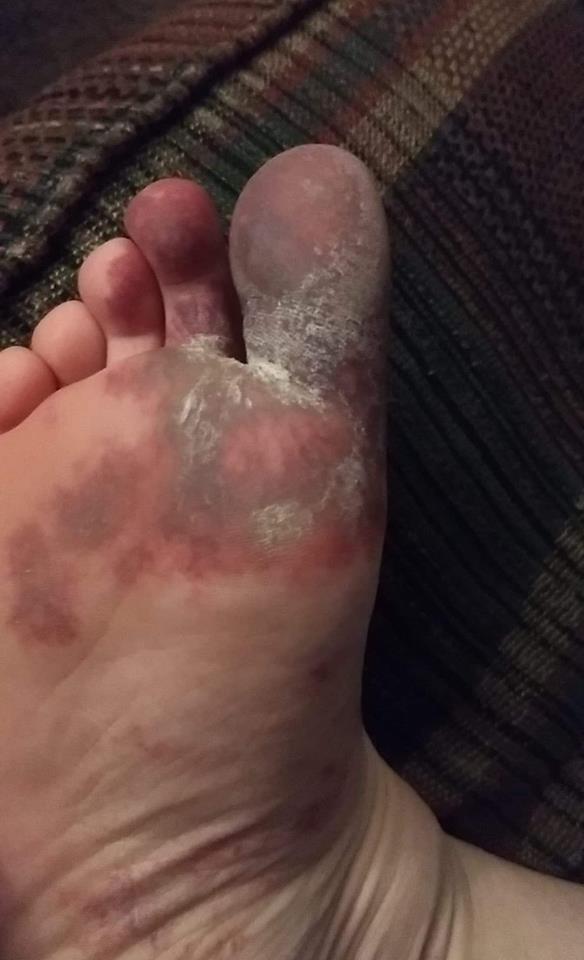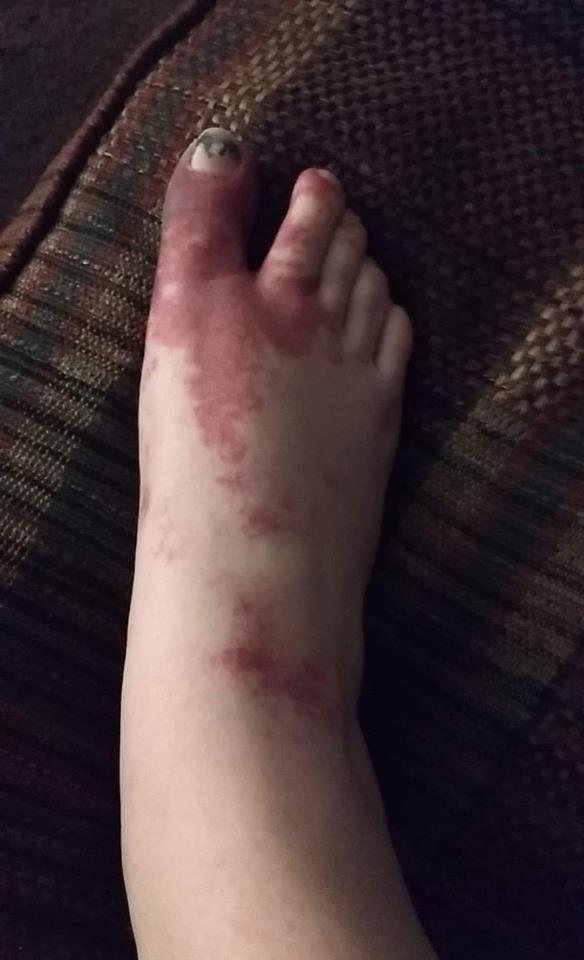
The medical term for Klippel-Trenaunay syndrome is angio-osteohypertrophy syndrome.
Klippel-Trenaunay syndrome has three main characteristics: varicose veins, port-wine stains, and abnormal growth of soft tissues or bones. Soft tissues are the tissues located under the skin, around the organs and bones, or in the spaces between them. The diagnosis is made when at least two of the above-mentioned abnormalities are present in the same arm or leg. Other parts of the body may also be affected.
Children with this syndrome typically have two or more abnormalities in one or more limbs (arms or legs): varicose veins, port-wine stains, and abnormal growth of soft tissues and bones. The port-wine stain is often visible from birth. The varicose veins and abnormal growth usually develop later, often at a young age. The port-wine stain is most commonly located on an arm or leg, but it can also appear on the hip, abdomen, buttocks, shoulders, chest, or back.
Due to excessive growth, there may be a difference in length and/or thickness between the two legs or arms. It also occurs that children have more than ten fingers or toes (polydactyly) or that fingers or toes are fused together (syndactyly). The severity of symptoms varies from patient to patient.
Klippel-Trenaunay syndrome cannot be cured. However, the symptoms can be reduced through specific treatments. Laser therapy can help reduce the appearance of port-wine stains. Treating varicose veins in people with Klippel-Trenaunay syndrome is more challenging than in those with regular varicose veins. Therefore, compression stockings are usually the preferred option.
A difference in leg length can lead to posture problems and back pain, and is treated with a heel lift or surgery.
This syndrome is classified as a complex combined malformation because it involves a capillary-venous malformation, in which lymphatic vessels may also be involved (see ISSVA classification).
Vascular anomaly syndromes with eponyms such as Sturge-Weber syndrome and Klippel-Trenaunay syndrome, were described approximately 100 years ago. At that time, diagnoses were
primarily based on clinical observations, as imaging studies were limited and knowledge of genetics was not as advanced as it is today. Relying solely on clinical examination made achieving an accurate diagnosis challenging then and continues to pose difficulties today.
Currently, many vascular anomaly syndromes can be characterized genetically, with genetics as the most important clue to come to a diagnosis. Despite this advancement, eponyms continue to be used. Increasingly, these eponyms are associated with genetic diagnoses, offering a new perspective on the naming and genetic classification of disorders. This evolution brings the possibility of targeted therapeutic options, suggesting that completely ‘saying goodbye’ to well-known and frequently used eponyms might not be desirable yet.
Klippel-Trenaunay syndrome or not? An exploration of atypical presentations
A rare case of Klippel-Trenaunay syndrome presenting with chronic myeloid leukemia
Klippel-Trenaunay syndrome and pregnancy: A Case-Report
A Patient with Klippel-Trenaunay Syndrome and Mild Ophthalmic Manifestations
Deep Vein Thrombosis in Klippel-Trénaunay Syndrome
Ophthalmic Alterations in the Sturge-Weber Syndrome, Klippel-Trenaunay Syndrome, and the Phakomatosis Pigmentovascularis: An Independent Group of Conditions?
A neonate with Klippel-Trénaunay syndrome
Breast Hemangioma: Unique Presentation in a Patient with Klippel- Trenaunay-syndrome
Sirolimus for neonatal Klippel-Trenaunay syndrome with chylothoraxChiari I malformation with Klippel-Trenaunay syndrome: case report and review of the literature
Gastrointestinal bleeding with Klippel-Trenaunay syndrome: a case report
Breast Hemangioma: Unique Presentation in a Patient with Klippel- Trenaunay-syndrome
Diagnosis and management of the venous malformations of Klippel-Trénaunay syndrome
Klippel-Trenaunay syndrome with anorectum involvement and portal hypertension
Management of postpartum haemorrhage in a patient with Klippel-Trènaunay syndrome
Sirolimus for neonatal Klippel-Trenaunay syndrome with chylothorax
Tracheal Varicose Veins Associated with Klippel-Trenaunay Syndrome
A neonate with Klippel-Trénaunay syndrome: a case report
Large abdominal cutaneous bypass that developed naturally in Klippel-Trénaunay syndrome
Tracheal Varicose Veins Associated with Klippel-Trenaunay Syndrome
A neonate with Klippel-Trénaunay syndrome: a case report
Large abdominal cutaneous bypass that developed naturally in Klippel-Trénaunay syndrome
Orthostatic intolerance with Klippel-Trenaunay syndrome
Pregnancy with Klippel-Trenaunay syndrome
Diagnosis and management of the venous malformations of Klippel-Trénaunay syndrome
Letter: Spinal Neurovascular Malformations in Klippel-Trenaunay Syndrome: A Single Center Study
In Reply: Spinal Neurovascular Malformations in Klippel-Trenaunay Syndrome: A Single Center Study
Tracheal Varicose Veins Associated with Klippel-Trenaunay Syndrome
A neonate with Klippel-Trénaunay syndrome: a case report
Large abdominal cutaneous bypass that developed naturally in Klippel-Trénaunay syndrome
Orthostatic intolerance with Klippel-Trenaunay syndrome
Case Series of Concomitant Klippel-Trenaunay Syndrome and May-Thurner Syndrome
Potential Utilization of Lymphoscintigraphy in Patients With Klippel-Trenaunay Syndrome
Diagnosis and management of the venous malformations of Klippel-Trénaunay syndrome
Potential Utilization of Lymphoscintigraphy in Patients With Klippel-Trenaunay Syndrome
Spinal Neurovascular Malformations in Klippel-Trenaunay Syndrome: A Single Center Study
Large abdominal cutaneous bypass that developed naturally in Klippel-Trénaunay syndrome
National Organization for Rare Diseases USA
Bron: https://www.huidhuis.nl/huidaandoening/syndroom-van-klippel-trenaunay

